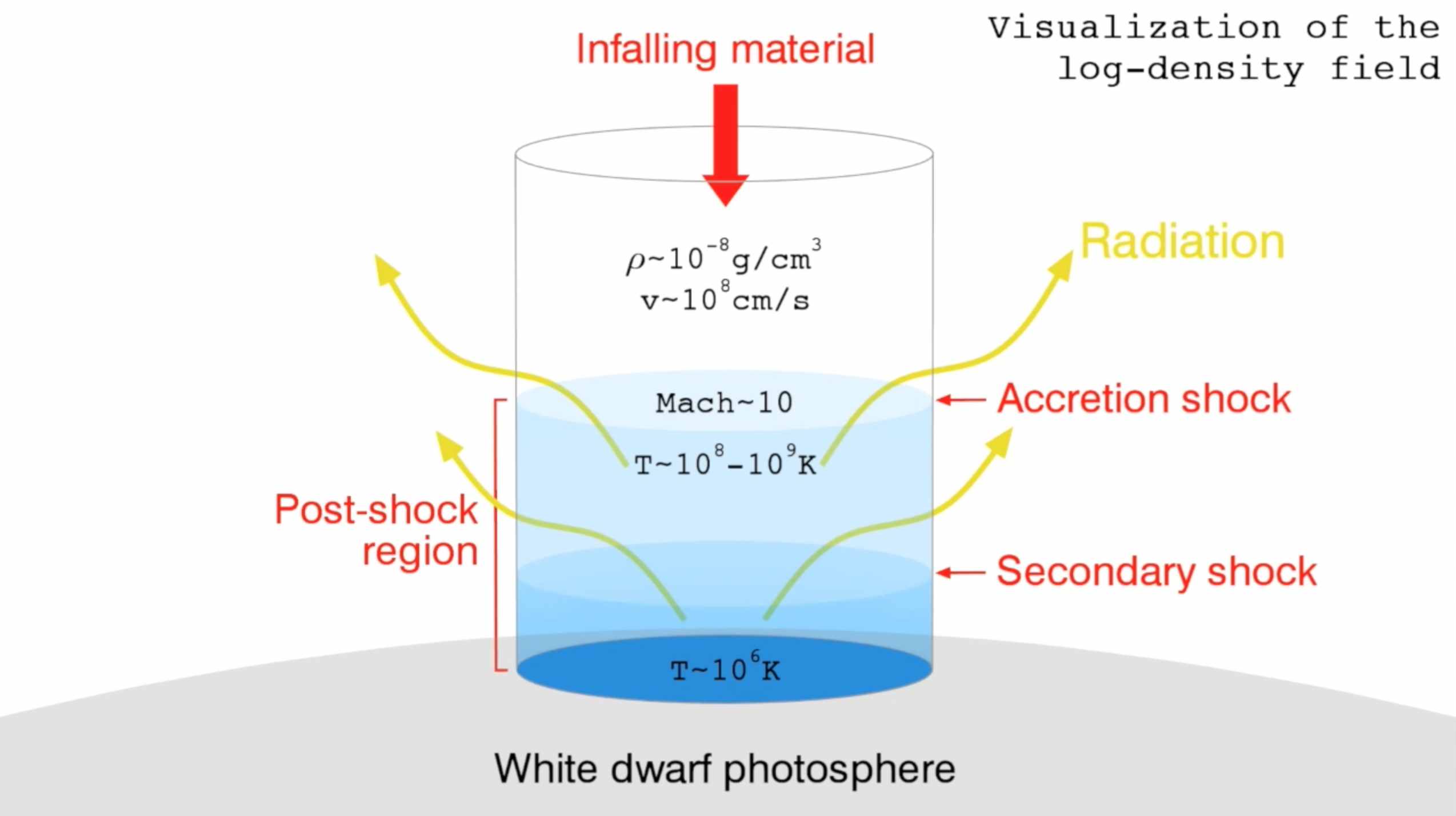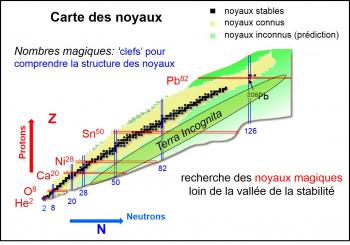A team of researchers from CEA (Astrophysical Department and CEA-DAM) and the LUTH Laboratory (Paris Observatory) has just published a comprehensive study of an enigmatic phenomenon of quasi-periodic oscillations at the surface of strongly magnetic white dwarfs also called "Polars ". These dense stars are orbiting a companion and capture its material that falls freely toward the white dwarf poles. Strongly heated to millions of degrees, the hot gas or plasma then emits mainly in X-rays. Thanks to detailed numerical simulations of the plasma behavior, the researchers were able to reconstruct the existence of strong instabilities leading to rapid oscillations in the luminosity with timescales of only a few seconds. However, using the database of the XMM-Newton satellite, these oscillations were sought unsuccessfully by the team, in the X-ray emission of over 20 Polars. This contradiction leads today researchers to propose to study the phenomenon in the laboratory. Indeed, similar physical conditions can currently be replicated by large power lasers like the LMJ [1]. The control of plasma instabilities is a key element for nuclear fusion by magnetic (ITER experience) ou inertiel confinement (laser Mégajoule) and instabilities of white dwarfs could contribute to a better understanding of this general phenomenon. These results are the subject of two articles published in the journal Astronomy & Astrophysics, July 2015.
 |
see the movie of the numerical simulation (short version) |
The "exotic" nuclei pose the challenge of a universal description of the nuclear structure and raise the question of the evolution of the shell structure. An IRFU team has developed the Magic Number Off Stability (MINOS) project to answer these questions. A physics program has been established in collaboration with Japanese teams of the RIKEN institute, where RIBF (Radioactive Isotope Beam Factory) is the world's most efficient accelerator for producing neutron-rich nuclei at intermediate energies of several hundreds of MeV. Experiments with the MINOS detector began in 2014 and their first results have just been published in Physical Review Letters crowning five years of effort and paving the way for a harvest of exciting results in the years to come.
A team of researchers from CEA (Astrophysical Department and CEA-DAM) and the LUTH Laboratory (Paris Observatory) has just published a comprehensive study of an enigmatic phenomenon of quasi-periodic oscillations at the surface of strongly magnetic white dwarfs also called "Polars ". These dense stars are orbiting a companion and capture its material that falls freely toward the white dwarf poles. Strongly heated to millions of degrees, the hot gas or plasma then emits mainly in X-rays. Thanks to detailed numerical simulations of the plasma behavior, the researchers were able to reconstruct the existence of strong instabilities leading to rapid oscillations in the luminosity with timescales of only a few seconds. However, using the database of the XMM-Newton satellite, these oscillations were sought unsuccessfully by the team, in the X-ray emission of over 20 Polars. This contradiction leads today researchers to propose to study the phenomenon in the laboratory. Indeed, similar physical conditions can currently be replicated by large power lasers like the LMJ [1]. The control of plasma instabilities is a key element for nuclear fusion by magnetic (ITER experience) ou inertiel confinement (laser Mégajoule) and instabilities of white dwarfs could contribute to a better understanding of this general phenomenon. These results are the subject of two articles published in the journal Astronomy & Astrophysics, July 2015.
 |
see the movie of the numerical simulation (short version) |



